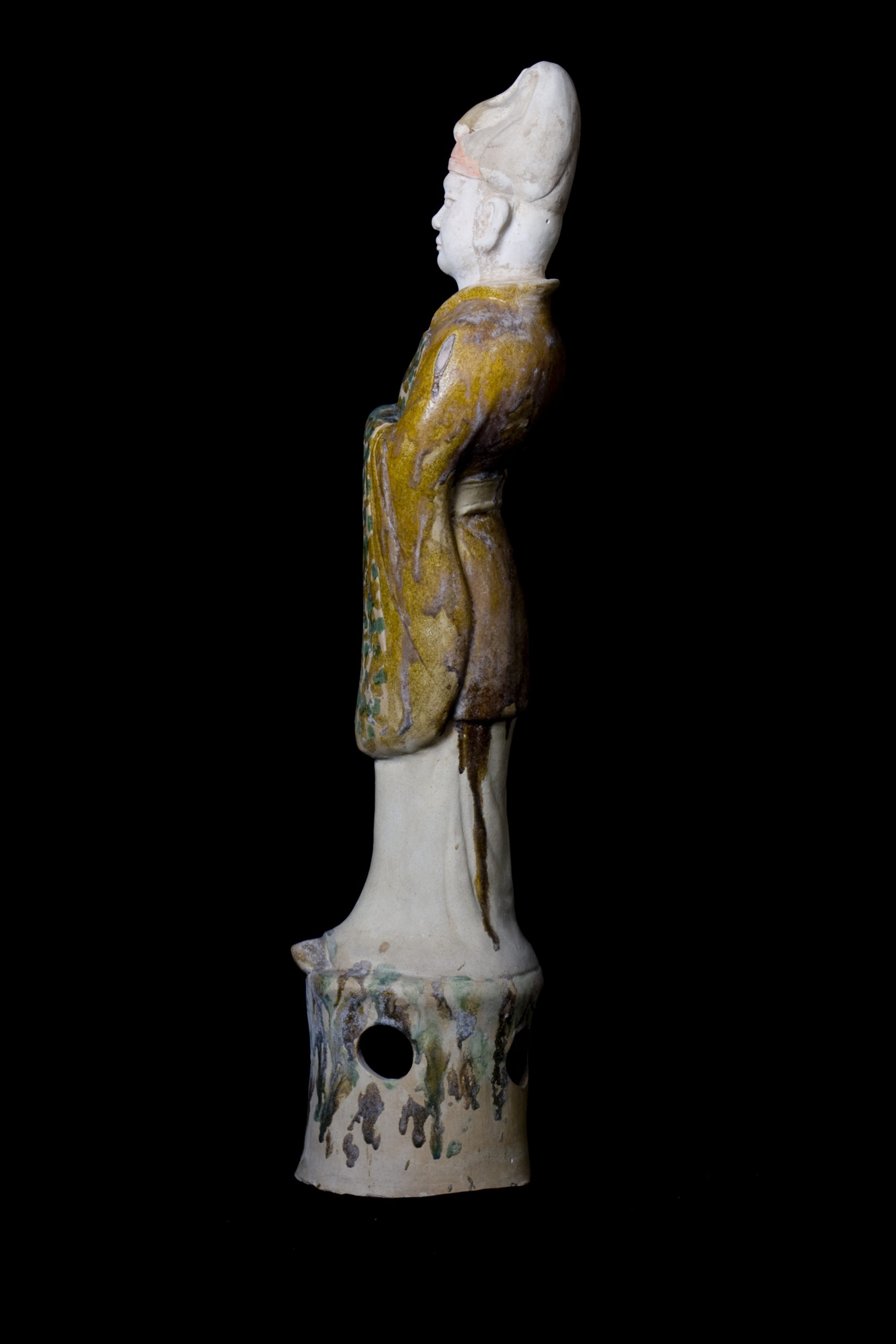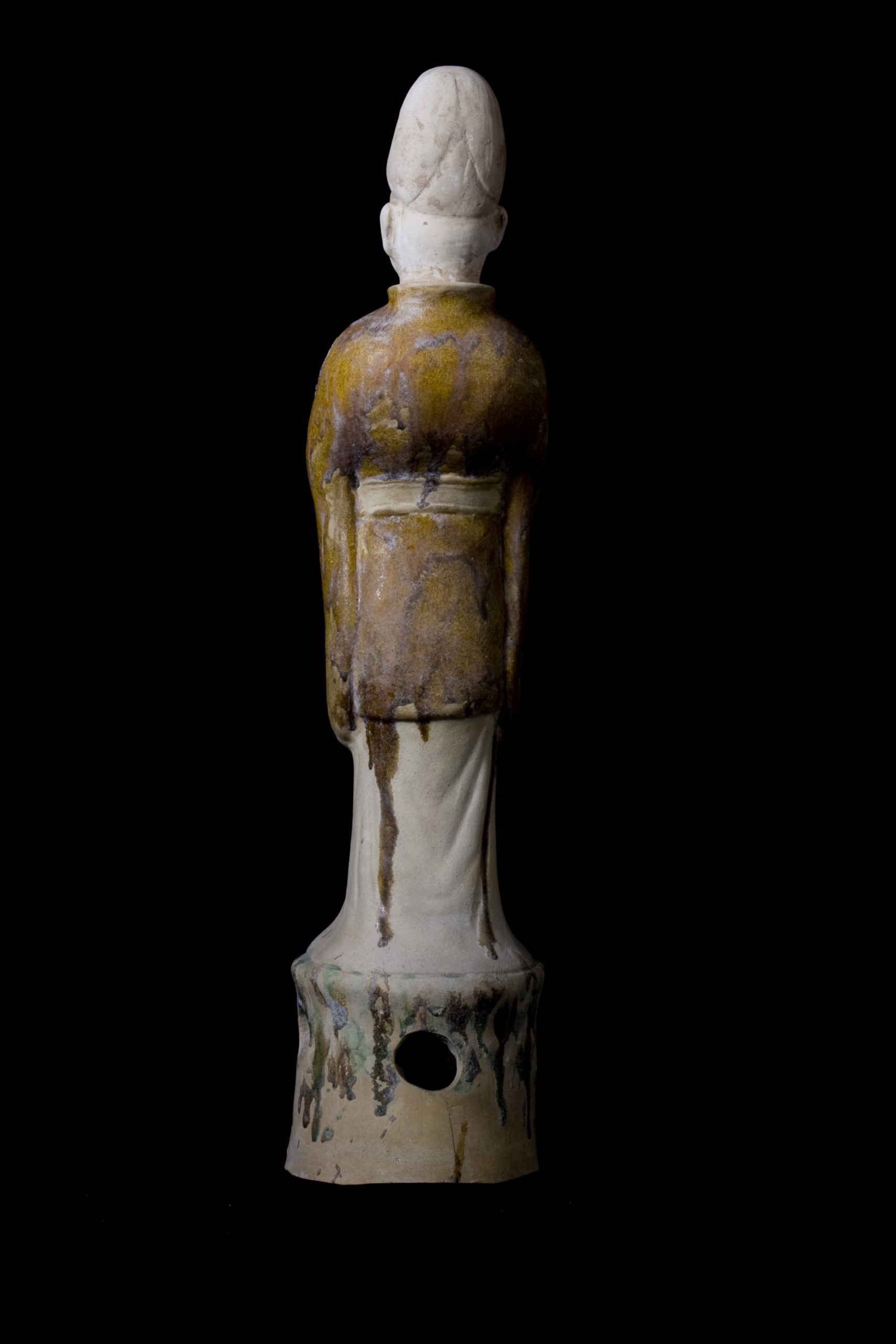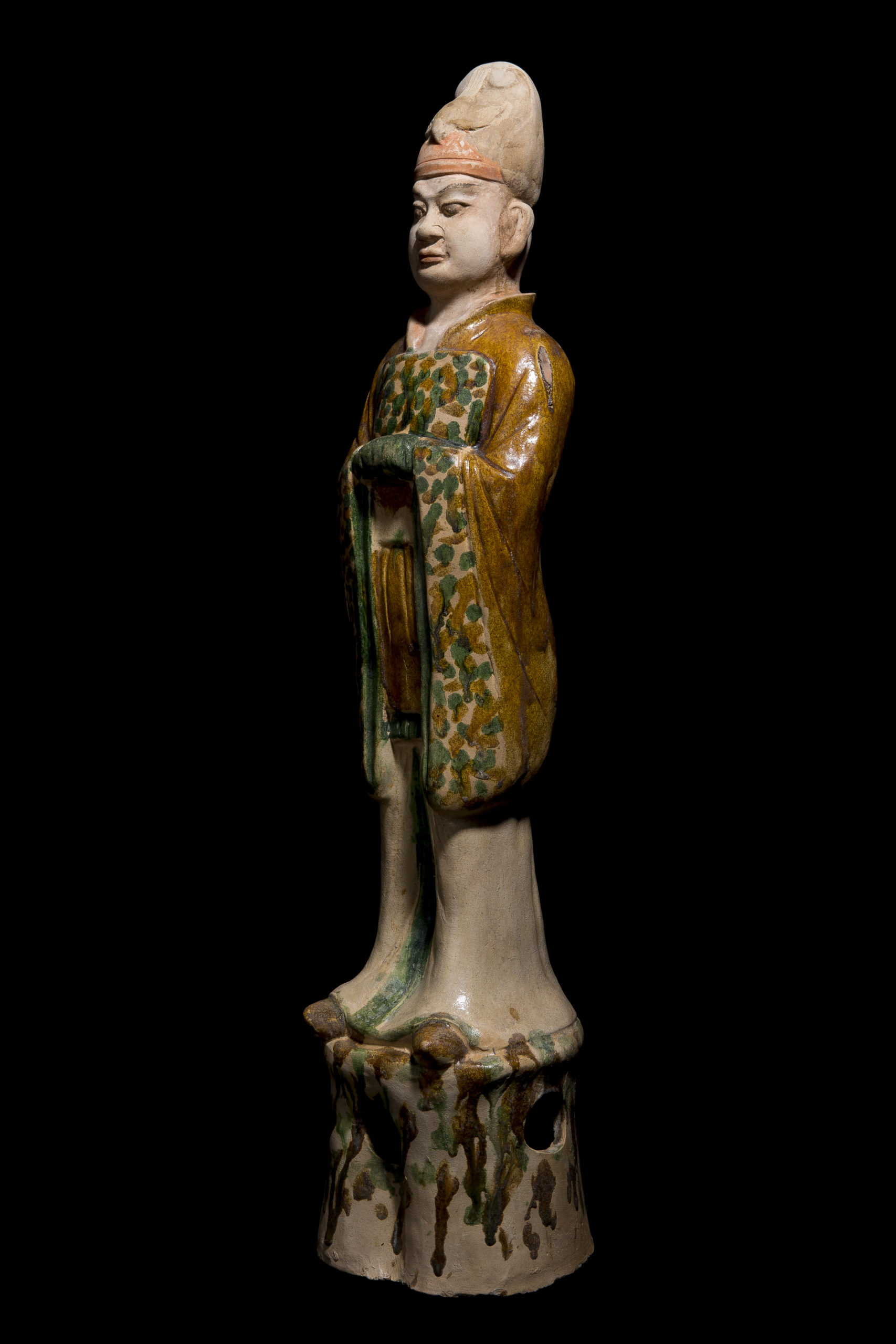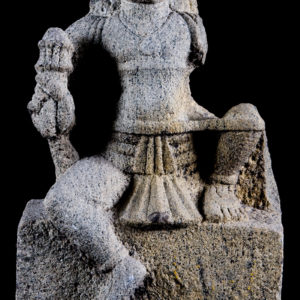View cart “Fiber Headdress” has been added to your cart.
Product Description
A Tang dynasty sancai (three color) glazed pottery model of a Taoist official, TL tested by Ralf Kotalla – worldwide oldest private laboratory specialized for genuine thermoluminescence test analysis in Germany.
The figure is portrayed standing upon a pedestal in an observant position, dressed in traditional sancai (amber, green, and a creamy off-white) glazed robes, typical of this epoch. His clasped hands are joined in front beneath his long sleeves.
This figure bears the typical headdress for an official in the Tang dynasty and can be identified by the shape of his hat, traces of red pigment can still be observed. The phoenix that decorates his head indicates that he serves in the court of the great immortal Xiwangmu – the Queen Mother of the West – who presides over the Western paradise (the Taoist heaven), a land of eternal summer, perfection, and beauty.
This fantastic piece is accompanied by the following documents:
– TL Test by Ralf Kotalla Laboratory NE: 06081204
– Certificate of Expertise by Jean-Yves Nathan – a leading authority specialized in Far East Archaeology from the CEDEA (The European Confederation of Art Experts).
– European Passport
– Certificate of Authenticity by Muzeion Gallery
Provenance: Private European Collection
Taoism is a Chinese philosophy based on the writings of Lao-tzu advocating humility and religious piety. It is a highly organized system, with levels of heaven and hell organized like a bureaucracy, complete with kings, governors, judges and government officials. The Tao – which literally translates as “The Way” – is a fundamental idea in most Chinese philosophical schools; in Taoism, however, it denotes the principle that is the source, pattern and substance of everything that exists.
Burial figurines of graceful dancers, mystical beasts, and everyday objects reveal both how people in early China approached death and how they lived. Since people viewed the afterlife as an extension of worldly life, these figurines, called mingqi, sometimes referred as “spirit utensils” or “vessels of ghosts” disclose details of routine existence and provide insights into belief systems over a thousand-year period.
When China was unified again, first briefly under the Sui and then under the long and prosperous Tang, mingqi truly resurged as a part of elaborate tombs. Tang mingqi integrated the guardian figures and pack animals of the Northern and Southern Dynasties, but also incorporated the many international influences that were popular during this time of stability and expansion. Following Han dynasty traditions, Tang mingqi frequently take the form of musicians, dancers, and servants in clay, but are ornamented with sancai (three-color) glaze, an artistic influence that was transmitted from Central Asia along the Silk Road. Foreigners were also frequently depicted, reflecting a cosmopolitan society that embraced exchanges with other groups and cultures.
Additional information
| Circa | 718-906 AD |
|---|---|
| Origin | China |
| Dimensions | 6.5 × 7 × 30 in |
| Weight | 11.7 lbs |



























